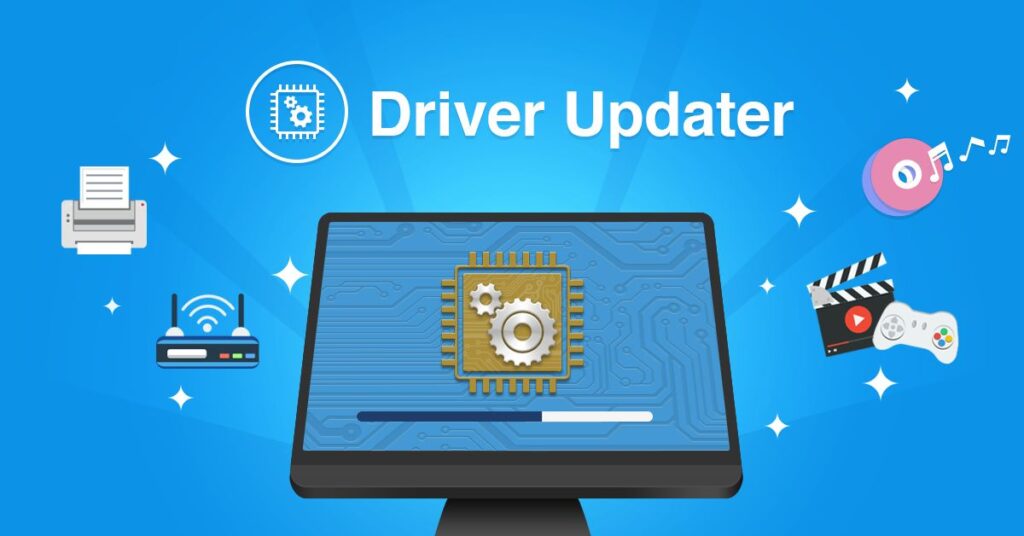When programming in Cocoa applications, encountering errors like “errordomain=nscocoaerrordomain&errormessage=could not find the specified shortcut.&errorcode=4” is common. This error indicates a problem with locating a designated shortcut within the application.
Developers often face challenges when troubleshooting this issue. Understanding the NSCocoaErrorDomain and error code 4 is crucial for resolving such errors efficiently. By identifying the root causes and implementing appropriate solutions, developers can ensure the smooth functioning of their applications.Top of Form
Grasping the NSCocoaErrorDomain
The NSCocoaErrorDomain is a framework used in Cocoa applications for error reporting. It encapsulates errors related to object-oriented programming in macOS and iOS applications.
Errors within this domain provide insights into the nature of the problem, aiding developers in troubleshooting.
Unraveling the Blunder Message
The error message “could not find the specified shortcut” is a clear indication of a problem within the application. It suggests that a crucial shortcut necessary for the application’s functionality is inaccessible. This prompts developers to investigate further to identify the underlying causes and potential solutions.
The Meaning of Mistake Code 4

Error code 4 within the NSCocoaErrorDomain signifies a specific issue related to the availability of a designated shortcut. It serves as a guide for developers, helping them pinpoint the exact nature of the problem. Understanding this error code is essential for effectively troubleshooting and resolving the issue to ensure the application operates smoothly.
Normal Situations Prompting This Mistake
One common cause is errors in specifying shortcuts within the application’s code. Developers must meticulously review and validate shortcut configurations to address this issue. Another factor leading to this error is compatibility issues with the operating system or other system components.
Ensuring seamless alignment between the application and the system environment is crucial for preventing such errors.
System Compatibility Problems
Compatibility issues with the operating system or other system components can prompt this error. Updating libraries and frameworks to match the system’s requirements is essential for mitigating compatibility issues.
Developers must conduct a thorough analysis of the application’s compatibility with the operating system and other dependencies to identify and address any potential issues.
Read This Blog: Spin Win Daily: How to Use Sports Guru Pro to Increase Your Chances of Winning
Troubleshooting Steps
To troubleshoot this error, developers can begin by verifying shortcut specifications within the application’s code. This involves cross-referencing the specified shortcuts with the application’s requirements and ensuring accurate implementation.
Developers should conduct a comprehensive analysis of the application’s compatibility with the operating system and other dependencies. Regularly updating both the application and underlying system components can help mitigate compatibility issues that may lead to this error.
Checking System Compatibility
Ensuring the application aligns seamlessly with the system environment is crucial. Developers must analyze the compatibility of the application with the operating system and other dependencies. This involves verifying that the application functions correctly across different system configurations.
Identifying and addressing compatibility issues early on can prevent errors and improve overall performance. Regular testing on various devices and platforms helps ensure compatibility and a smooth user experience.
Updating Software and Drivers
Regularly updating both the application and underlying system components is essential. Outdated software and drivers can contribute to compatibility issues and errors.

Developers should stay vigilant about updates released by the operating system and other software providers. Updating the application’s libraries and frameworks to match the system’s requirements is crucial. By keeping the software and drivers up to date, developers can mitigate compatibility issues and improve the application’s performance and stability.
Case Studies
Case studies exemplifying the resolution of the “errordomain=nscocoaerrordomain&errormessage=could not find the specified shortcut.&errorcode=4” error provide valuable insights into effective problem-solving strategies. These studies showcase real-world scenarios where developers encountered the error, identified its root causes, and implemented targeted solutions.
By analyzing these case studies, developers can glean practical techniques and best practices for addressing similar issues in their own Cocoa applications. Such real-life examples offer actionable insights that can enhance error resolution capabilities and improve application reliability.
Seeking Support from the Community
When troubleshooting becomes challenging, developers can seek support from online forums and communities. Engaging with fellow developers can provide valuable insights and solutions to complex issues.
Sharing experiences and seeking advice from the community can help expedite the resolution process. Developers can benefit from the collective knowledge and expertise of the community.
By collaborating with others, developers can gain new perspectives and approaches to problem-solving, ultimately improving their skills and capabilities.
Read This Blog: The Untold Story of Selena Green Vargas: A Look at Her Life
Resolving the Error: Step-by-Step Guide
Resolving the NSCocoaErrorDomain error with error code 4 involves several steps. Here’s a step-by-step guide:
Identify the Error: First, recognize the NSCocoaErrorDomain error with error code 4 within your application.
Review Shortcut Specifications: Verify the shortcut specifications within your application’s code. Ensure that shortcuts are accurately defined and implemented according to the application’s requirements.
Check System Compatibility: Conduct a thorough analysis of the application’s compatibility with the operating system and other system components. Update libraries and frameworks to match the system’s requirements if necessary.
Update Software and Drivers: Regularly update both the application and underlying system components, including software and drivers. This helps mitigate compatibility issues that may lead to the error.
Troubleshoot Compatibility: If compatibility issues persist, troubleshoot further by testing the application on different devices and platforms. Identify any specific scenarios where the error occurs and address them accordingly.
Seek Community Support: If troubleshooting becomes challenging, seek support from online forums and communities. Engage with fellow developers to gain insights and solutions to resolve the error.
Document Solutions: Document the troubleshooting steps taken and solutions implemented to address the error. This serves as a reference for future troubleshooting and helps other developers facing similar issues.
Implement Preventive Measures: Learn from the experience and implement preventive measures in future projects to avoid encountering similar errors. Stay informed about best practices and updates in error handling techniques.
By following these steps and addressing the root causes of the NSCocoaErrorDomain error with error code 4, you can effectively resolve the error and ensure the smooth functioning of your application.
Avoiding the Error in Future Projects
To prevent similar errors in future projects, developers should document solutions and implement preventive measures.

By documenting troubleshooting steps and solutions, developers create a reference for addressing similar issues. Implementing preventive measures in subsequent projects involves conducting thorough testing and validation of shortcut specifications.
Staying informed about best practices and staying updated on changes in the development environment can also help avoid such errors.
Real-world Examples
Examining real-world examples of applications encountering similar errors can provide valuable insights into how developers resolved the issue. By studying case studies and examples, developers can learn from others’ experiences and apply effective strategies in their own projects.
Real-world examples offer practical solutions and demonstrate the importance of effective error handling in application development.
Read This Blog: Tex9.net PlayStation: Unveiling the Future of Gaming Experiences
The Impact on User Experience
Error messages such as “could not find the specified shortcut” can negatively impact the user experience. Users may find such errors frustrating and may lose confidence in the application’s reliability.
Minimizing errors and ensuring smooth functionality is crucial for maintaining user satisfaction and loyalty. Developers must prioritize error resolution and prevention to enhance the overall user experience.
Developers’ Perspectives
Developers share their experiences and perspectives on handling NSCocoaErrorDomain errors, offering valuable insights into the challenges they faced and the solutions they implemented. By sharing their experiences, developers contribute to the collective knowledge of the development community.
Understanding developers’ perspectives can help other developers facing similar issues navigate through challenges more effectively. By learning from others’ experiences, developers can broaden their understanding and improve their problem-solving skills.
Learning Assets for Mistakes Taking Care of
Continuous learning is essential in the ever-evolving field of software development. Highlighting resources for mastering error handling, including documentation and tutorials, empowers developers to enhance their skills. Accessing comprehensive documentation provided by platforms such as Apple’s developer documentation can offer in-depth insights into error handling techniques.

Online tutorials and courses focused on error handling provide practical guidance and examples for developers to learn from. Engaging in coding communities and forums allows developers to exchange knowledge and seek assistance from peers when encountering challenging errors.
Conclusion
In conclusion, comprehending and effectively addressing the NSCocoaErrorDomain error with error code 4, particularly when encountering the message “could not find the specified shortcut,” stands as a pivotal task for developers striving to craft flawless Cocoa applications. By meticulously investigating the underlying causes of this error and implementing tailored solutions, developers can uphold the seamless operation of their applications.
Maintaining a proactive stance through routine updates, compatibility validations, and active engagement within the developer community can significantly bolster efforts to resolve the “errordomain=nscocoaerrordomain&errormessage=could not find the specified shortcut.&errorcode=4” issue. Armed with comprehensive knowledge and adept troubleshooting skills, developers can adeptly navigate through instances of NSCocoaErrorDomain errors with error code 4, ultimately delivering a more gratifying user experience.
Frequently Asked Questions (FAQs)
What causes NSCocoaErrorDomain blunders?
NSCocoaErrorDomain errors can occur due to various reasons, including issues with shortcut specifications within the application’s code and compatibility problems with the operating system or other system components.
How might designers investigate Mistake Code 4?
Designers can troubleshoot Error Code 4 by first verifying shortcut specifications within the application’s code. Additionally, they should conduct a thorough analysis of the application’s compatibility with the operating system and other dependencies. Regularly updating software and drivers can also help mitigate compatibility issues that may lead to this error.
Are there preventive measures for staying away from these mistakes?
Yes, developers can take preventive measures to avoid NSCocoaErrorDomain errors. These measures include documenting solutions and implementing preventive measures in subsequent projects. Staying informed about best practices and keeping software and drivers up to date can also help prevent similar errors in the future.
Could clients at any point fix this blunder all alone?
In most cases, NSCocoaErrorDomain errors require intervention from developers. While users can report the issue, resolving the error typically requires the expertise of a developer to address the underlying causes and implement a solution.
How does this blunder influence application execution?
This error can impact application performance by hindering the functionality associated with the specified shortcut. As a result, users may experience disruptions or delays in using the application, leading to a less than optimal user experience.

I am Emma, a skilled writer and SEO expert. With years of experience in both fields, I love writing helpful articles readers love. I also want the articles to show up high on Google.
My goal is to make content that is both interesting and easy to find online.
I work hard to research topics, choose the right words, and organize information clearly.












